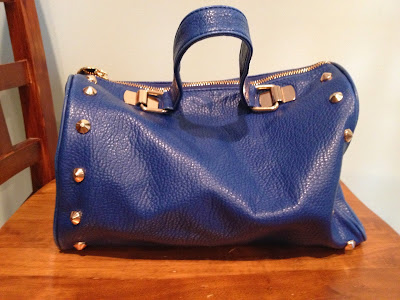The Even Behind Vintage Shiny Brite Christmas Ornaments
 |
| My showtime Shiny Brite ornaments. |
I’ve ever admired them, but similar a shot my curiosity is officially piqued: What’s the history behind these adorable footling ornaments?
The Shiny Brite storey begins after World War I amongst Max Eckardt, a High German born inwards 1890.
Though Eckardt was from Oberlind, Germany—just xx miles away from Lauscha, a hub for drinking glass ornament makers—he showtime trained inwards the toy industry. In 1926, though, he officially entered the ornament work organisation amongst his brother, Ersnt, opening a manufacturing works life inwards Oberlind, where his relatives too employees hand-decorated the drinking glass balls. His companionship too had an constituent inwards New York City at 1107 Broadway, which subsequently became constituent of the International Toy Center. Max emigrated to NYC inwards the belatedly 1920s.
With about other state of war on the horizon, Eckardt feared the United States’ provide of High German drinking glass ornaments would live compromised, compelling him to found, inwards 1937, the Shiny Brite Company. The inspiration for the shout out is obvious: The insides of the ornaments were coated amongst argent nitrate thus they would remain shiny, flavor after season.
To maintain his companionship afloat, Eckardt sought the aid of New York’s Corning Glass Company inwards 1937—with the hope that Woolworth’s would house a large lodge if Corning could alter its drinking glass ribbon machine, which made calorie-free bulbs, to make ornaments. The machine switchover was a success—molten drinking glass was shaped into balls amongst the aid of compressed air—and Woolworth’s ordered to a greater extent than than 235,000 ornaments; inwards Dec 1939, the showtime machine-made batch was shipped to Woolworth’s Five-and-Ten-Cent Stores, where they sold for 2 to 10 cents apiece.
Eckardt’s fearfulness proved prescient: Hitler’s rising to power, along amongst the British blockade, stopped the import of European ornaments to the U.S. inwards 1939.
 |
| My favorite Shiny Brite style. |
By 1940, Corning was producing nearly 300,000 unadorned ornaments per day, sending the clear drinking glass balls to exterior artists, including those at Max Eckardt’s manufacturing works life inwards New Jersey, for decoration. The ornaments were lined amongst argent nitrate, thus run through a lacquer bath, decorated past times Eckardt’s employees, too finally, packaged inwards chocolate-brown cardboard boxes. At first, they were strictly silver, but eventually, Eckardt produced red, green, gold, pink, too blueish ornaments. Corning too began offering a diversity of shapes, including tops, bells, icicles, teardrops, trees, lanterns, too pinecones.
During World War II, however, the lacquer pigment too argent lining became scarce, forcing Eckardt to brand clear ornaments amongst thin, pastel stripes, which didn’t ask equally much pigment. The metallic caps too hooks were replaced amongst cardboard too yarn. Some ornaments came amongst a tiny sprig of tinsel inside, but eventually, fifty-fifty this small-scale sum of metallic was prohibited during the war.
 |
| The showroom address, 45 East 17th Street, NYC, is similar a shot a Sephora. |
After the war, the crimped metallic caps returned, amongst the improver of the words “Shiny Brite Made inwards U.S.A.” on the top. As constituent of the rebuilding effort, the U.S. regime shipped Eckardt too his son, Harold, off to West Germany, hoping to breathe novel life into the High German drinking glass ornament industry. There, they ready a manufacturing works life inwards Wallenfells, which they named Lanissa, after Max’s 3 granddaughters (“L” for Lynne, “an” for Anne, too “issa” for Allison, whose nickname was Lissa).
Stateside, Corning continued to crank out Shiny Brite ornaments—by the 1950s, production reached a charge per unit of measurement of 1,000 per minute. (Machines too similar a shot painted the ornaments.) The 1950s was the Shiny Brite heyday, amongst Eckardt operating iv New Bailiwick of Jersey factories to maintain measuring amongst the demand. In 1955, Thor, a Chicago washing machine manufacturer, purchased the company, which eventually produced nearly 75 per centum of the ornaments sold worldwide.
 |
| Source: Christmas Nostalgia |
Eckardt died inwards belatedly 1961, too before long thereafter, Shiny Brite's calorie-free began to fade, maybe due to the popularization of plastic. In the belatedly 1990s, designer Christopher Radko revived the Shiny Brite name, too inwards 2001, began selling reproductions of the originals.




Comments
Post a Comment